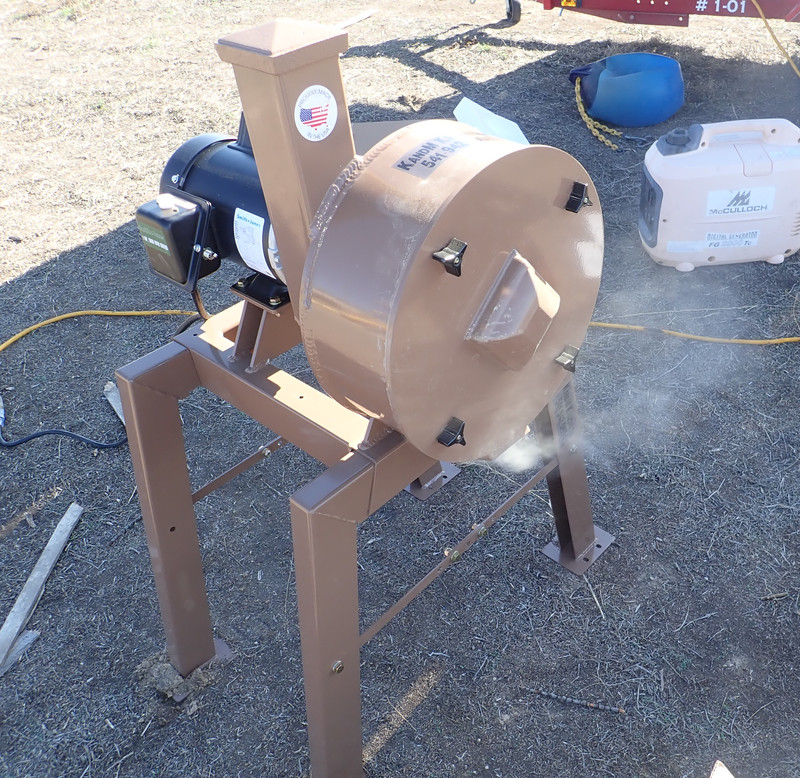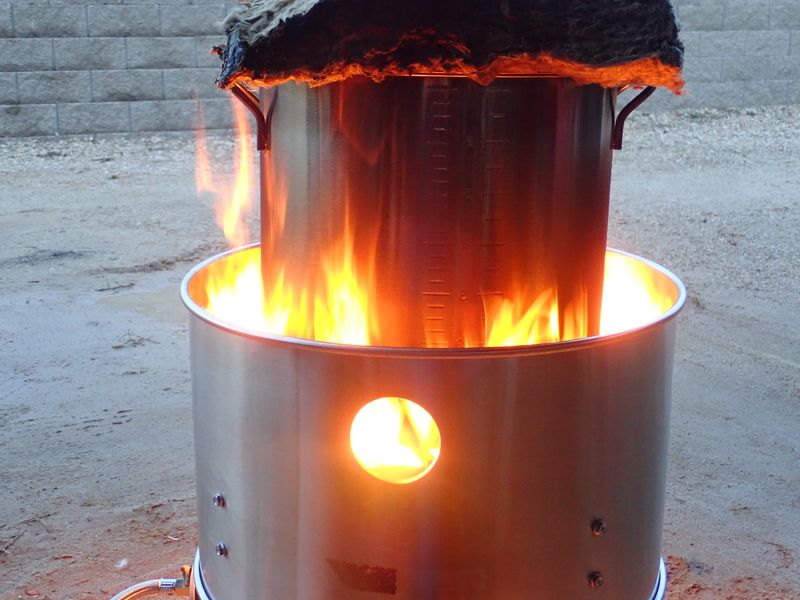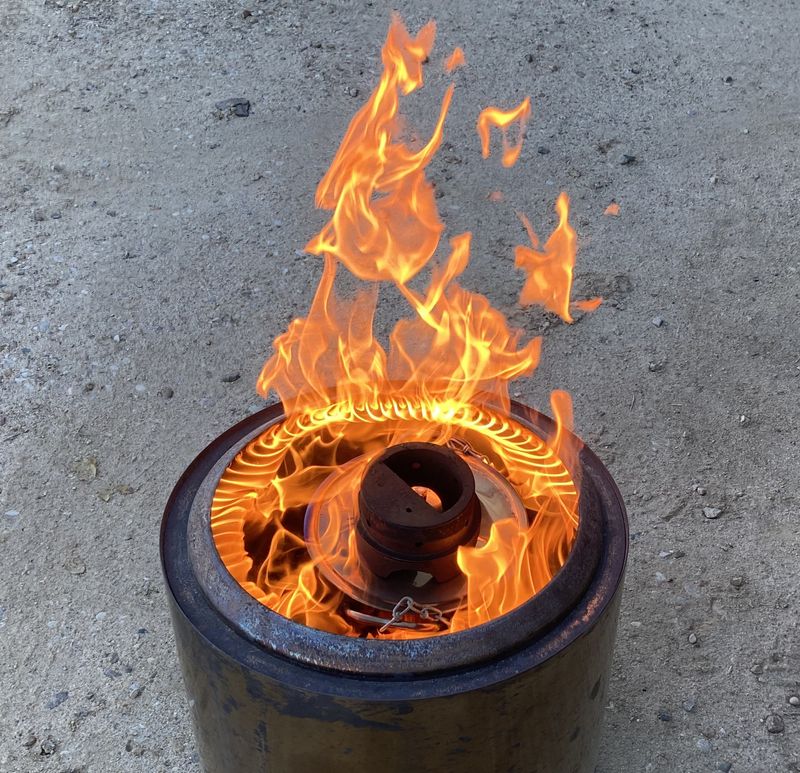I’ve clearly gone insane. I now own a rock crusher that turns small basalt around my property into a fine dust through the application of massive amounts of blunt force trauma! And now, I’m going to talk, in extensive detail, about the K&M Krusher 14” rock crusher I own!
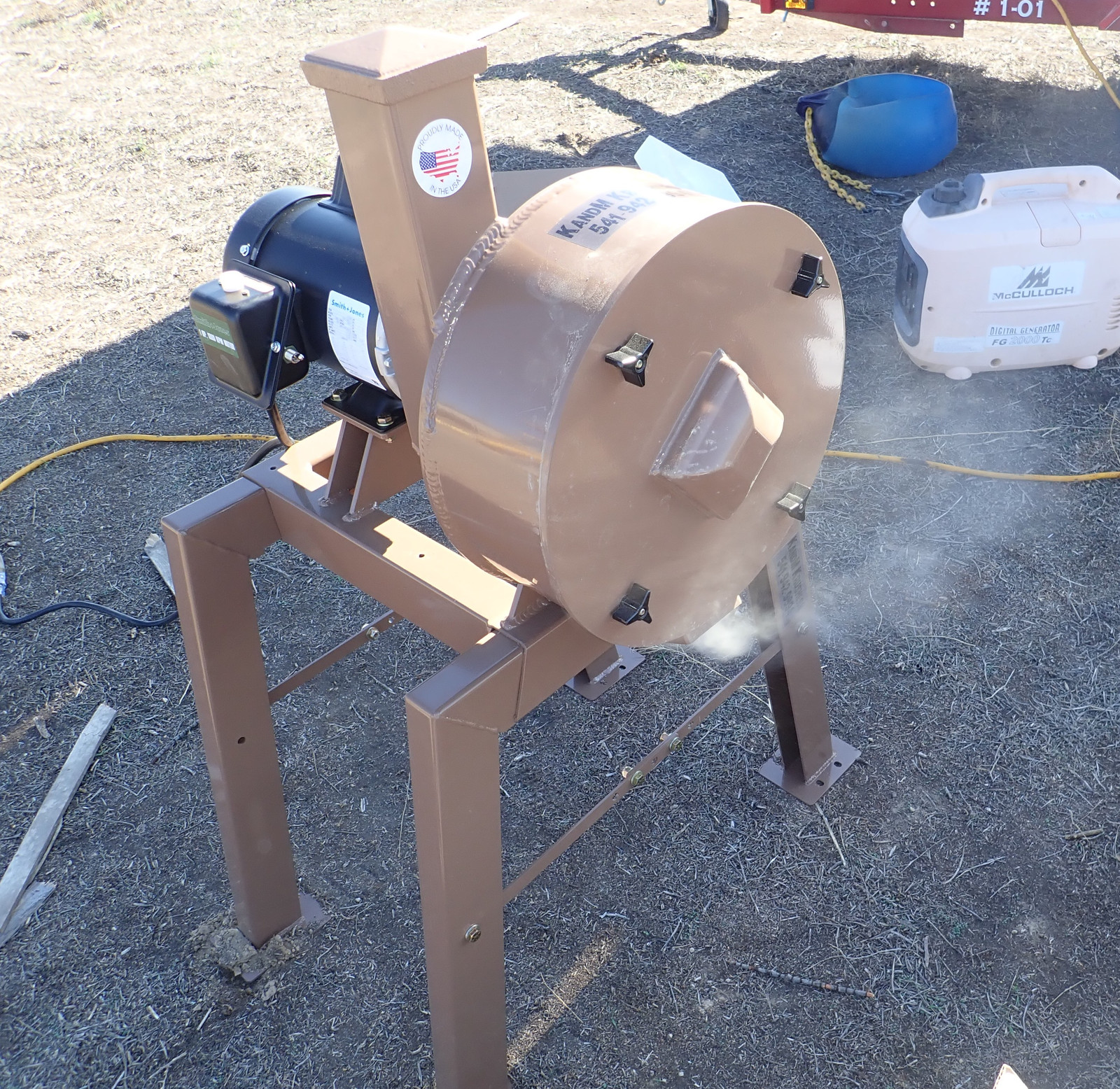
Rock Dust?
Why do I care about rock dust (and, in particular, basalt dust)? It’s been in the news lately for carbon capture, but it’s also exceedingly useful as a way to get trace minerals back into depleted soils. Fertilizers provide the nitrogen, phosphorous, and potassium that’s often missing in soil - but they don’t provide the wide range of other trace minerals that plants need. If you’ve got good soil, with no shortage of various minerals, rock dust is useless - it doesn’t add anything that’s not already there. But if your soil is low on various trace minerals, rock dust can be very nearly plant magic - because it adds in “all the stuff” that can limit growth.
I have no shortage of basalt around our hill - I can safely model my hill as “a pile of the stuff.” So, turning this into a resource, I’m planning to produce and sell basalt rock dust into the local market! And, because I’m literally picking the stuff up off my ground, the transport miles are quite low.
My output is a mix of “talcum powder” grade fines and some slightly larger material, which is helpful for garden soil - the finest bits release their minerals almost immediately, while the larger ones take a bit longer, helping out in the years to come.
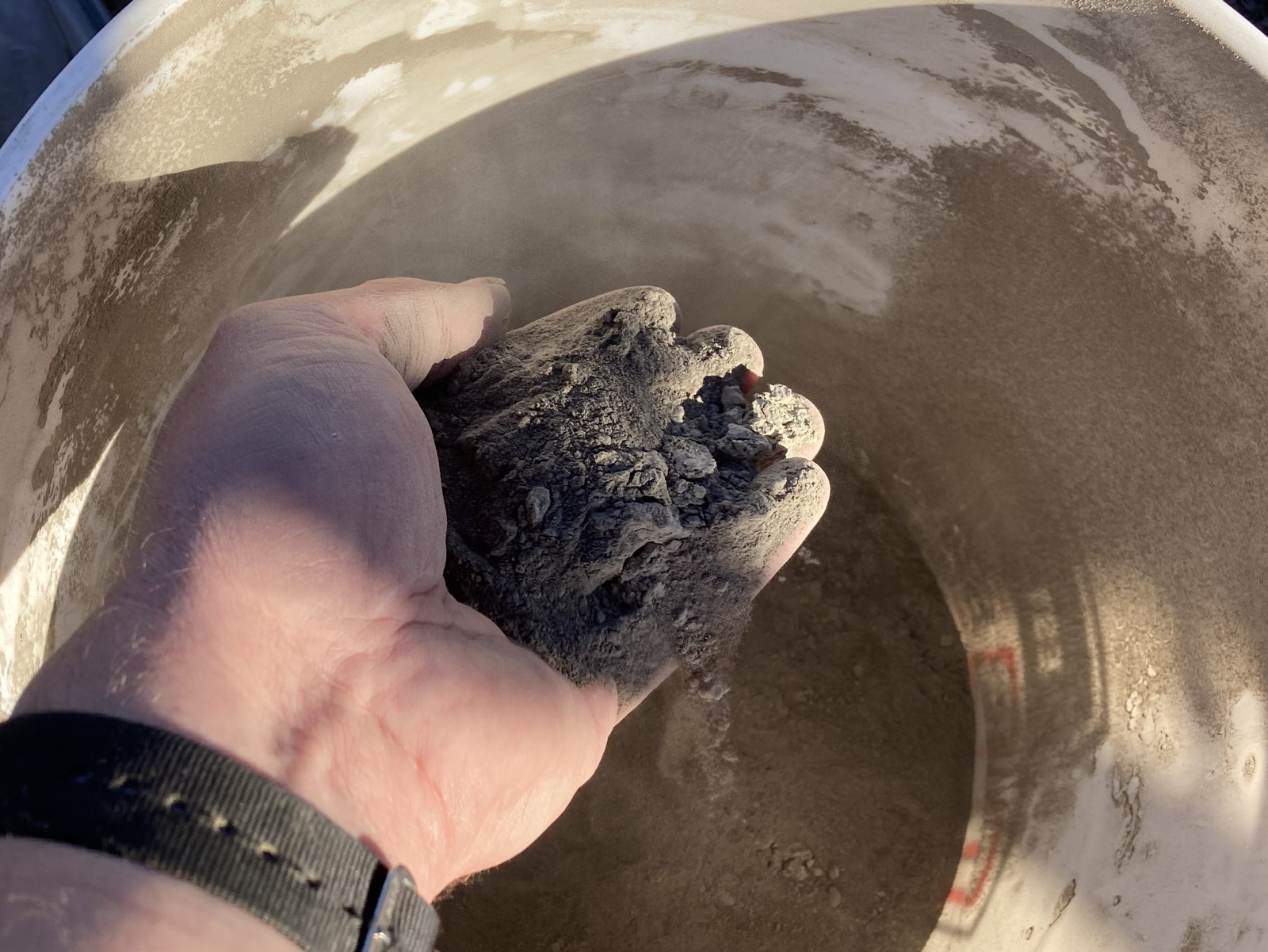
Would you like some? Reach out!
Assembly
I ordered the 14” rock crusher, and waited a week or two for it to ship and arrive. I got the deluxe setup - an electric motor (they come in a gas or electric version), legs to support the machinery, and the dust collector kit. It arrived in several boxes, which I helped the UPS guy load onto my wagon (this being the second time I’ve used this wagon recently to collect things off trucks - my office lithium iron phosphate bank got loaded up similarly).
In the background is the Owyhee Mountain Power #1-01 Prototype Solar Trailer - a standalone off grid power system on wheels, which I’ll be using to power all aspects of this operation. No grid needed!
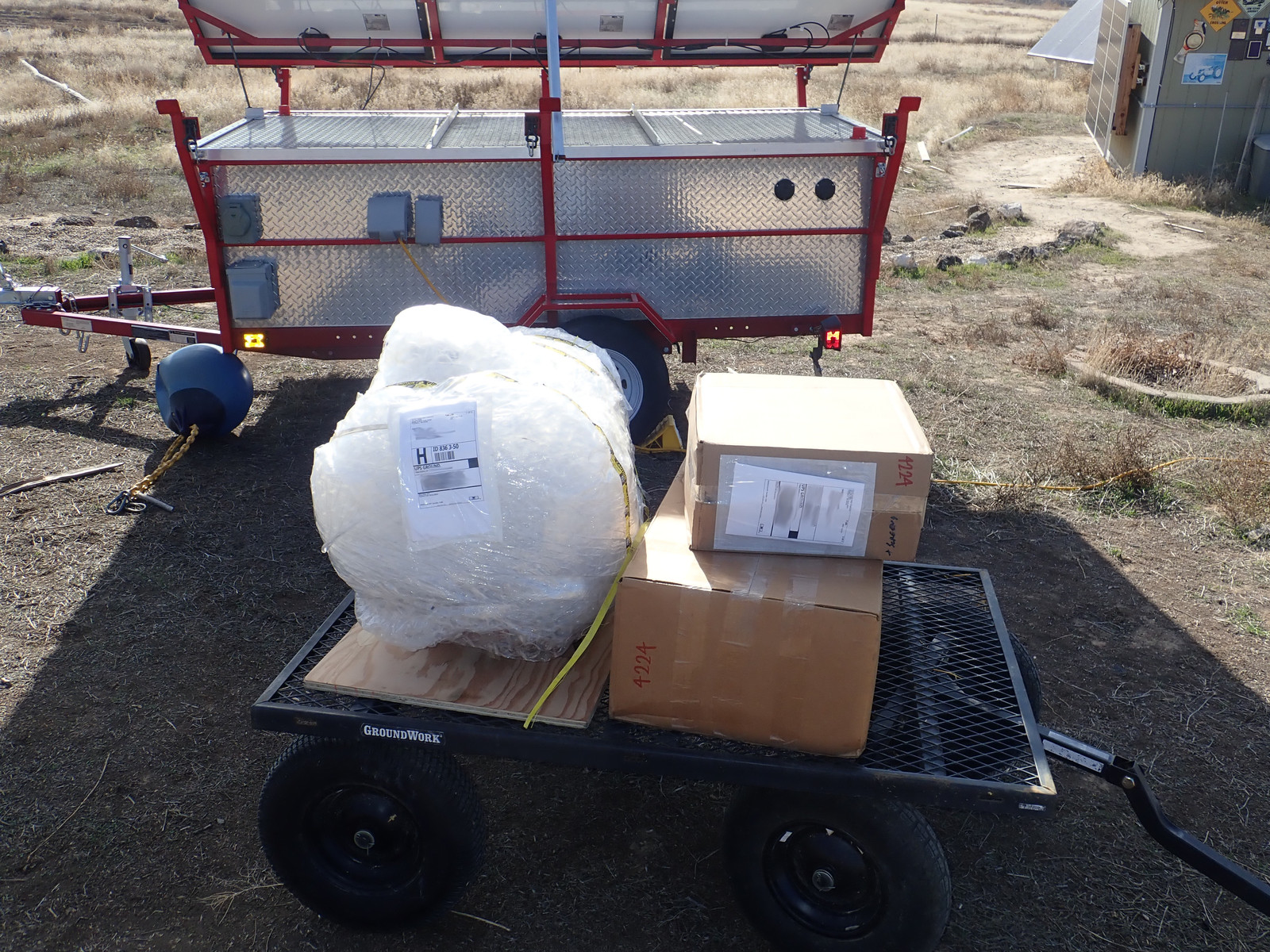
The “big blob” on a sheet of plywood, covered in bubble wrap, is the core machine. It’s quite well packed and padded, though I think you could also slap an address label on the raw machine and it would arrive just as intact - it’s stout construction.
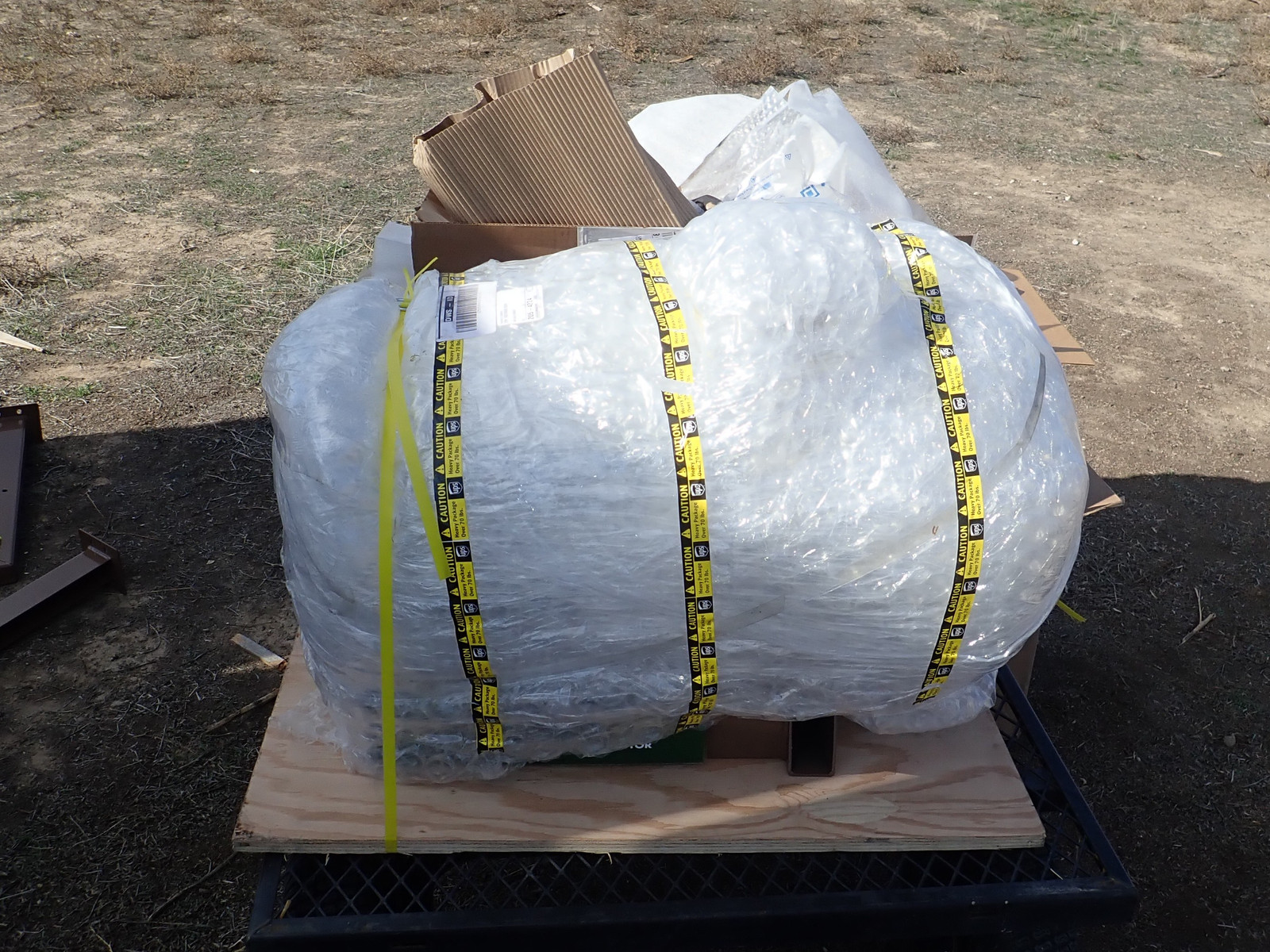
Unwrap it, and the core of the machine comes out. This is a 1hp electric motor, a lovejoy coupler to help absorb shock (there’s a rubber star between the various jaws), and the business end of the rock crusher with a 3” feed chute. The whole thing is nicely powder coated, and they’ve been generous with the welding rod. It’s a sturdy bit of machinery, which is useful when your use is “literally slinging a chain at rocks to pulverize them.”
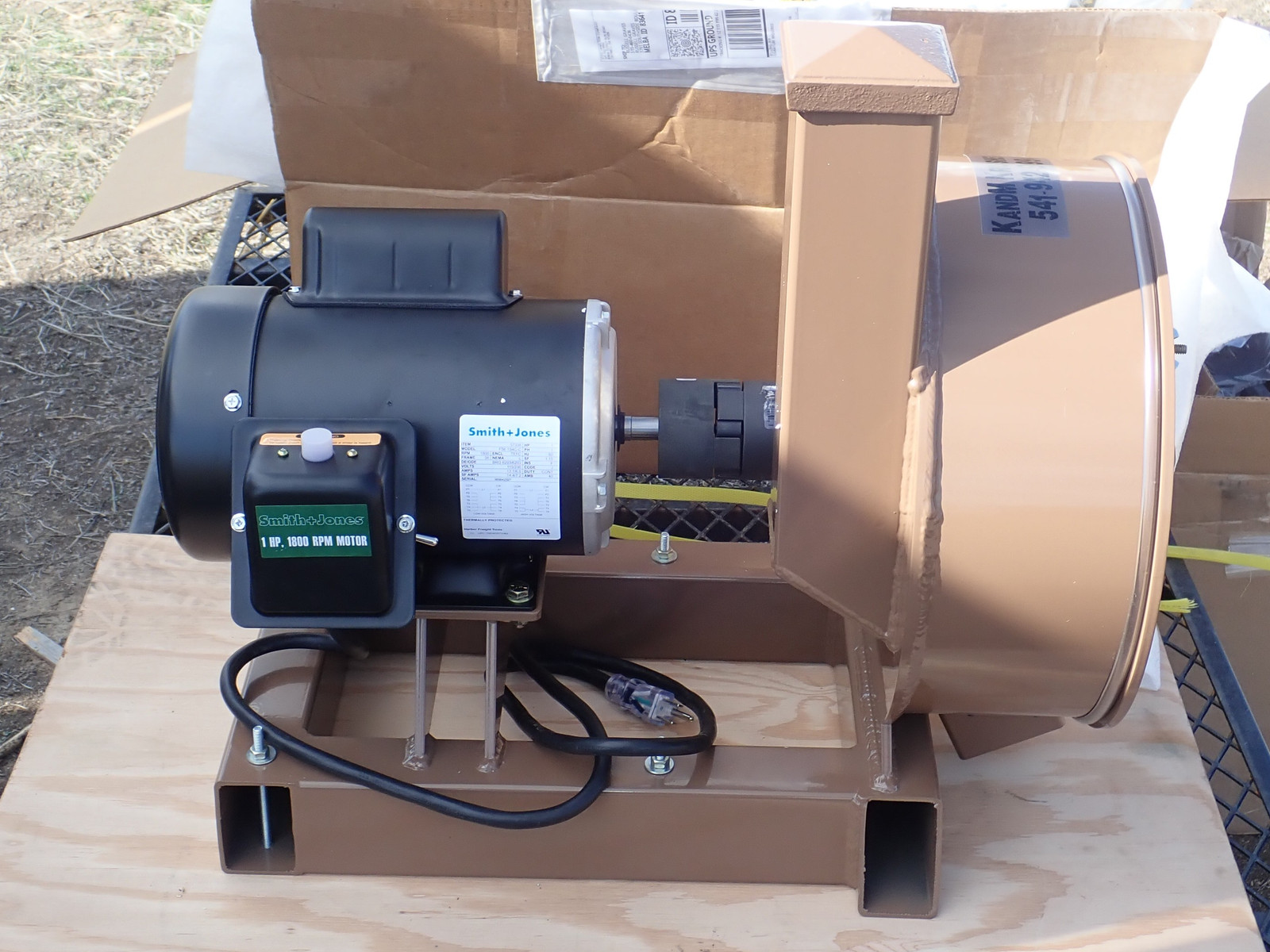
Grease the bearings. Seriously. They don’t come fully greased. You need a grease gun with this device, and you’ll be using it a lot.
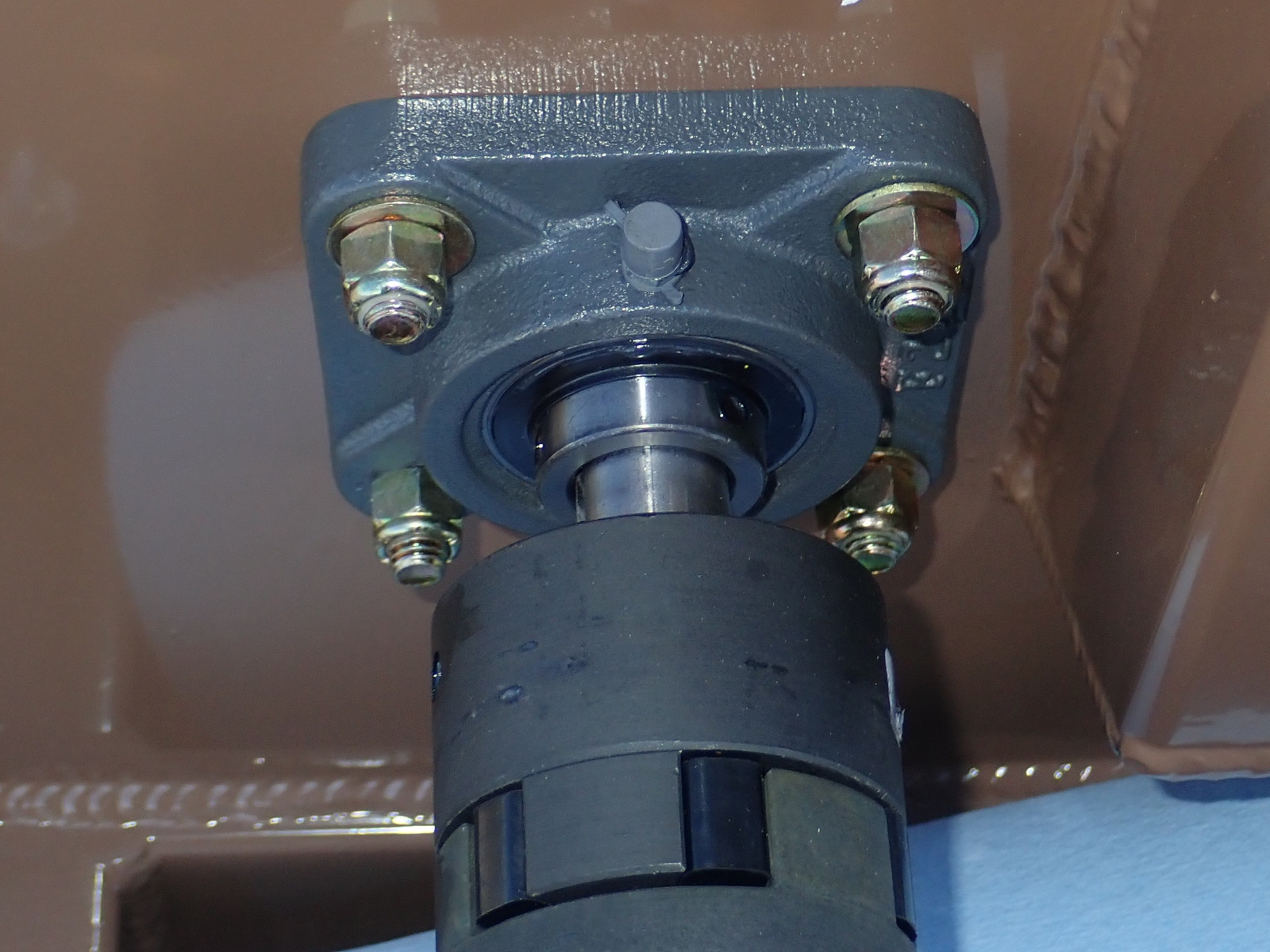
The legs come in their own box for installation. If you’re mounting the machinery on something else - a wagon, a trailer hitch platform, or something like that, I don’t think you need the legs. They’re nice for a free standing unit, though - so it’s up to you if you want a set. The feet are drilled with slotted holes so you can easily add casters or larger pads, depending on what terrain you’re working with.
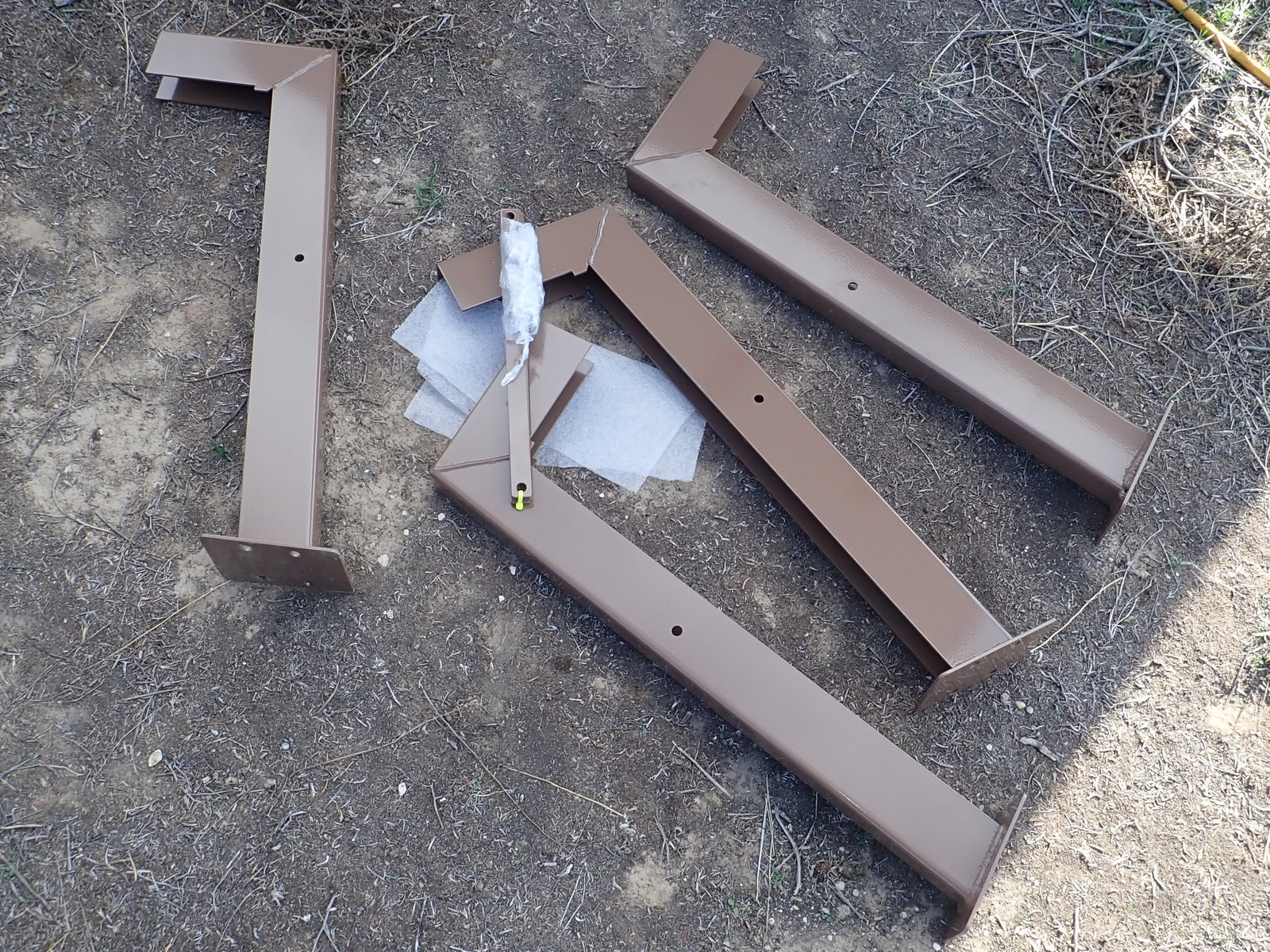
The one problem I ran into during assembly was that the legs didn’t quite fit into the holes for them. The “smear” of metal from their cutting tool was enough to block inserting the legs, though a file made short work of the problem. May I suggest, K&M, that you find a good carbide tooth blade for your metal saw? It’s faster, cooler, and makes a better cut than the grinding wheel you look to be using!
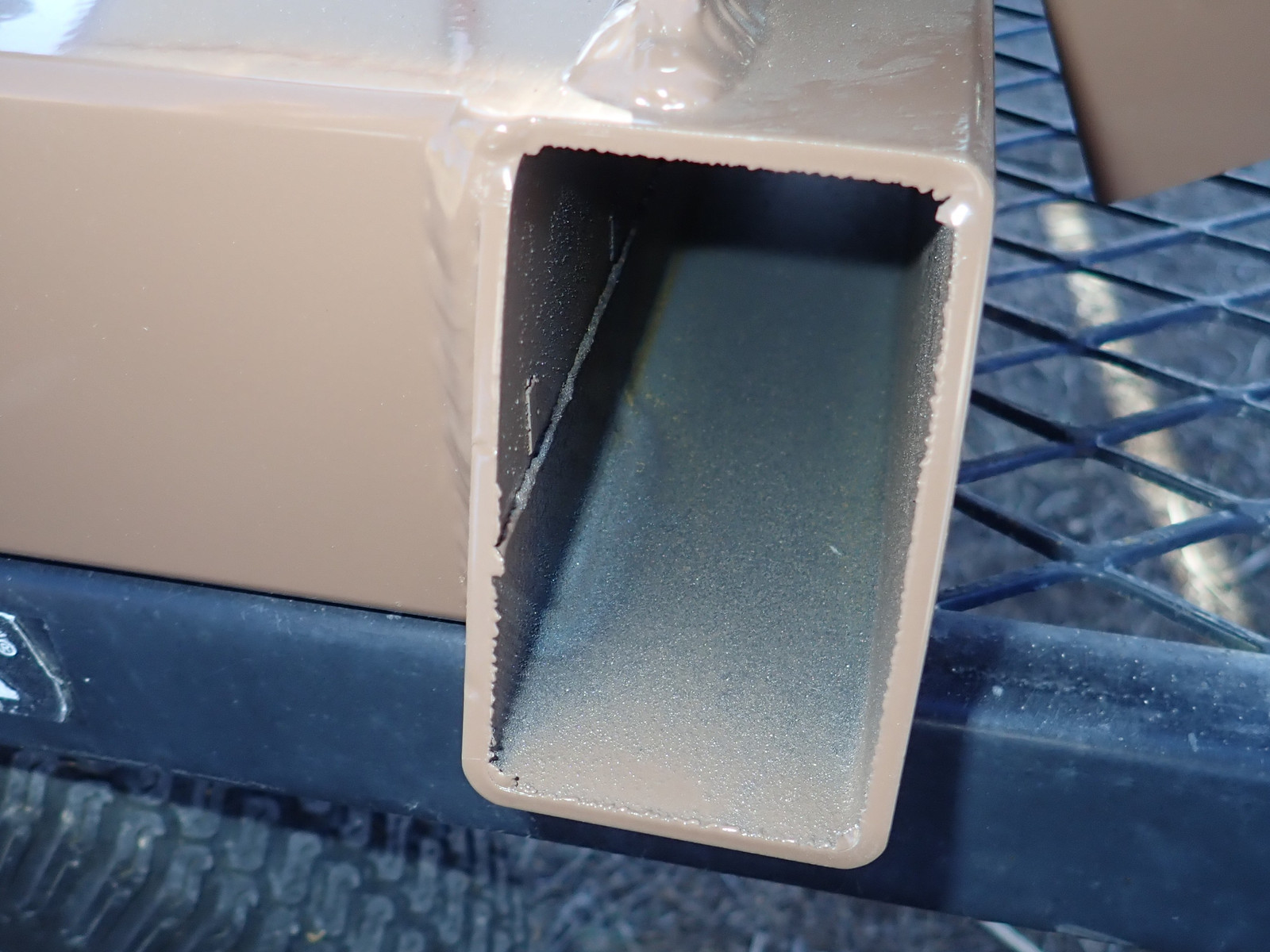
Get all that set up, plug it in, and, heyo! We’ve got dust! Except… I don’t really want dust blowing away in the wind. That’s the finished product! But, I know you’re curious about the business end of this machine first.
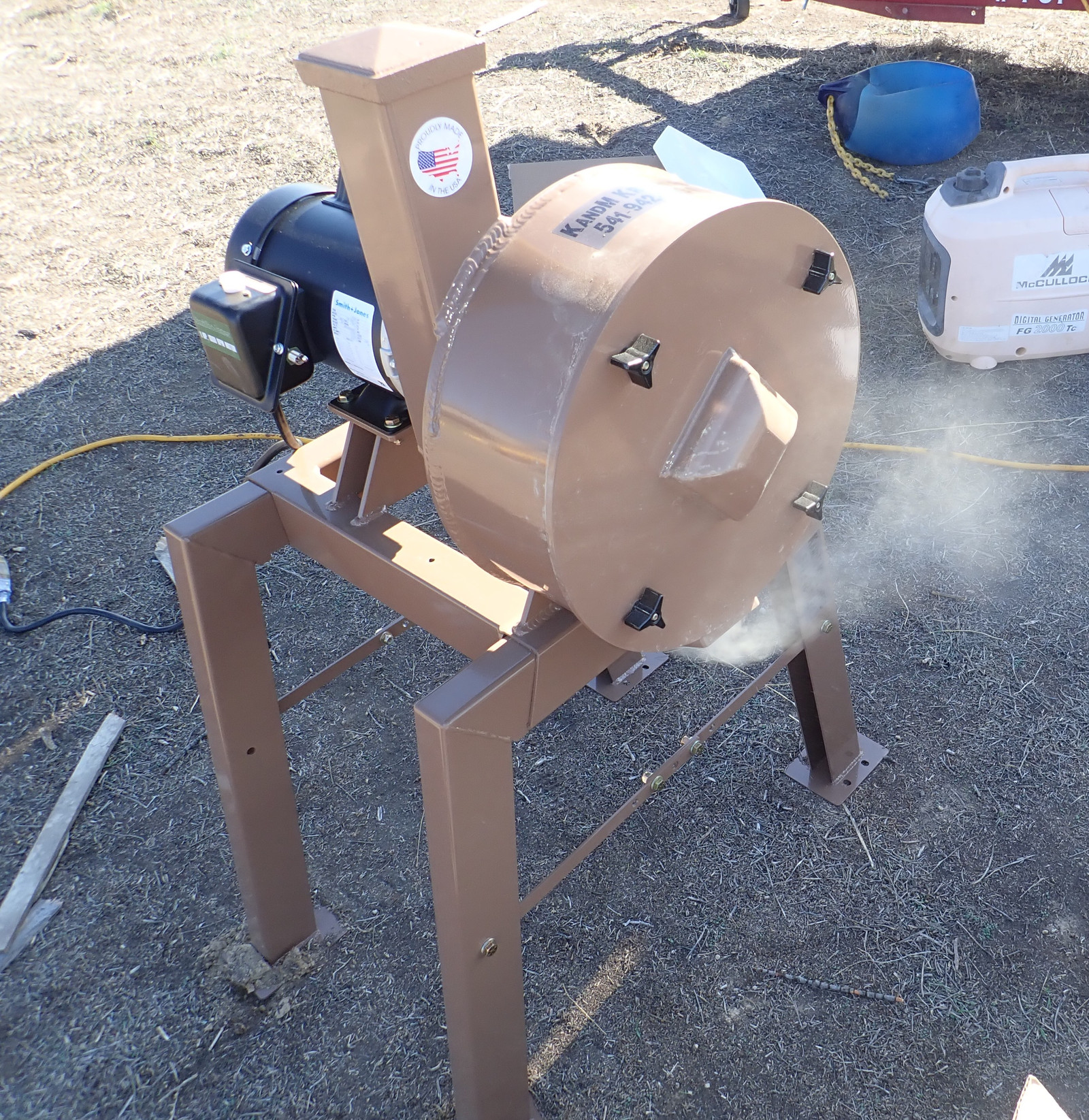
Chain Smash!
Inside the machine, it’s not very complex. There are a pair of very heavy duty bearings (that need regular grease - grease them!) front and rear, a plate with the chain flails attached to it, and a mesh filter screen at the bottom that handles the discharge (anything small enough to go through gets discharged, anything too large stays in for more contact with the chain). There’s some weatherstripping to help keep dust out of the bearing, though some still gets through - clean it out every now and then. This is also why you should be adding grease regularly, because dust and bearings just don’t get along well.
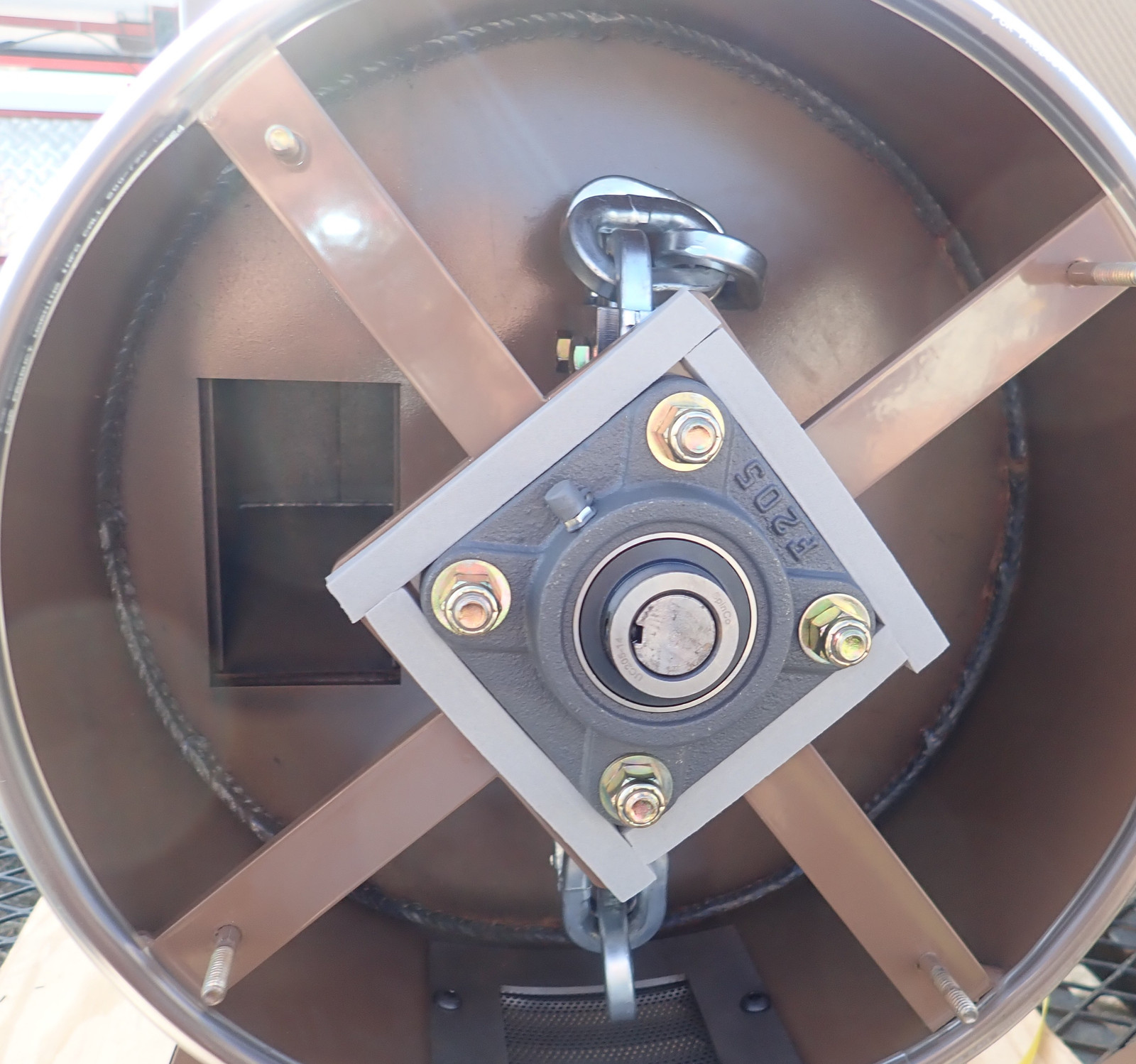
The core of the machine really is just “a super hard chain, spun very, very fast.” They claim a Rockwell hardness of 62 on the chain, which is consistent with some of the super high strength “security chains” - very hard to cut, and tolerates the abuse of pounding into rocks very well. How long does it last? I’ve no idea, but I plan to find out! K&M sells replacements for just about everything in the crushers - it’s not a light duty device, and the availability of replacement parts seems both useful and expected.
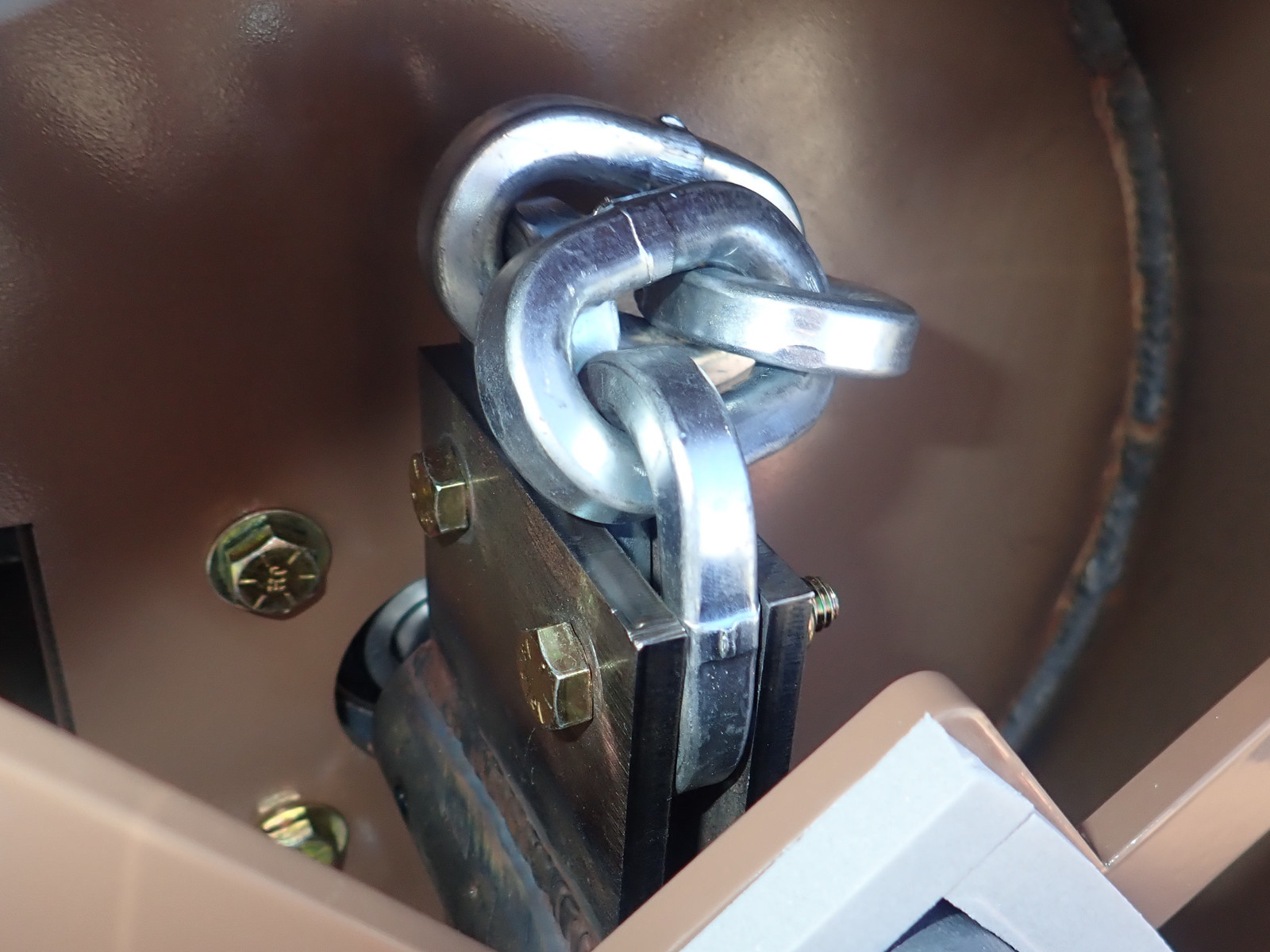
Dust Collection
In what should surprise absolutely nobody, this process generates a huge amount of dust. If you’re just interested in the rock debris for gold extraction (which seems to be the common use case for this sort of equipment), it might not matter. But dust, blowing away on the wind, is the sort of product that I’m after! And, I just don’t want to cover our hill with more rock dust than it’s already covered with. It’s a mess, and it’s not healthy to breathe either (we have enough “poor air quality days” for various reasons that I’d rather not contribute).
The dust collector setup comes in another box (with some extra heavy duty screens I ordered), and, of course, is “some assembly required.”
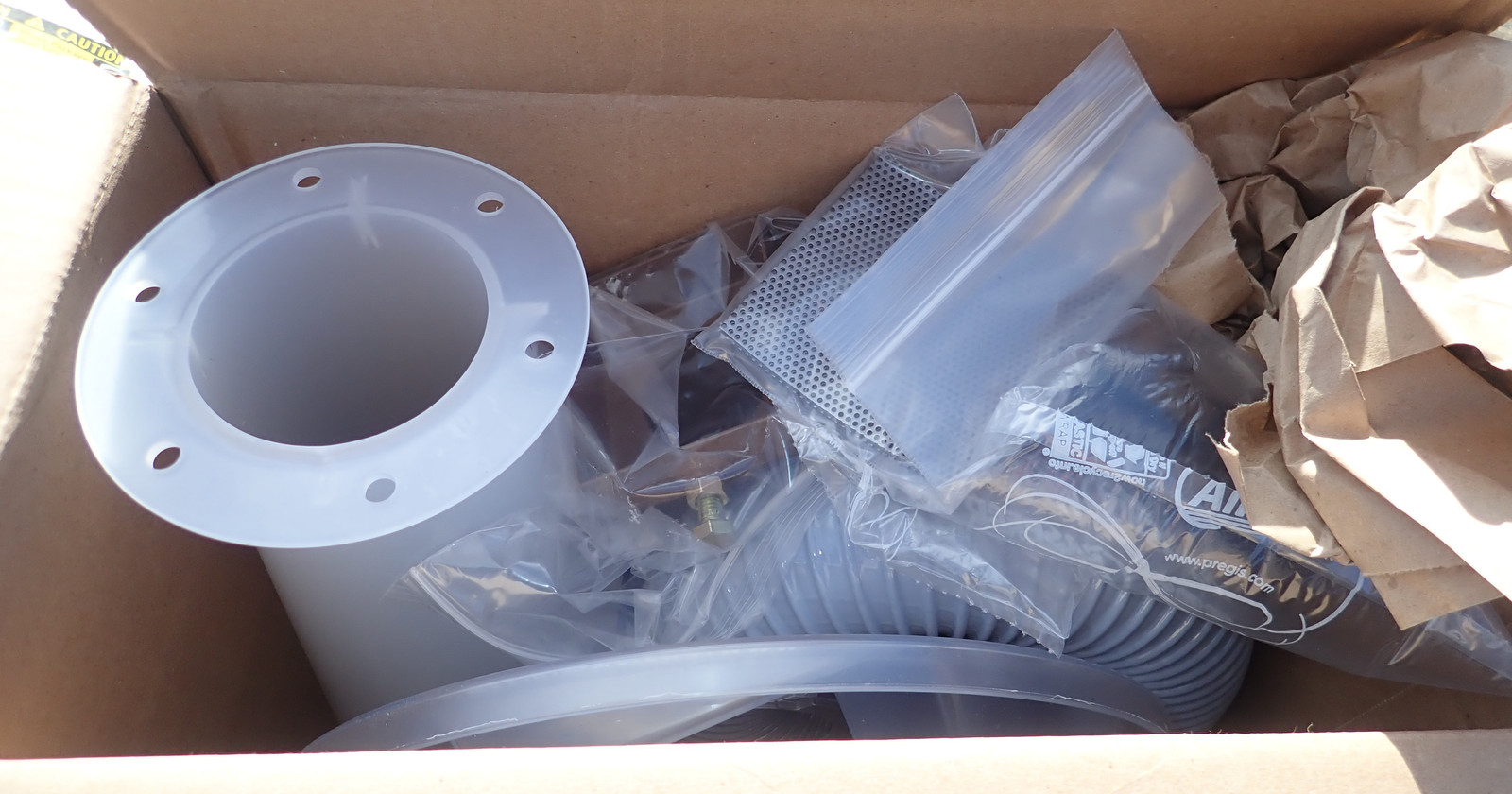
It starts with an adapter that fits over the exhaust chute. This bolts on with a jam nut (the vibrations off this machine are enough to back most things out quickly enough, if you’re not careful), and allows the hose to slide over it. This puts a suction on the whole machine.
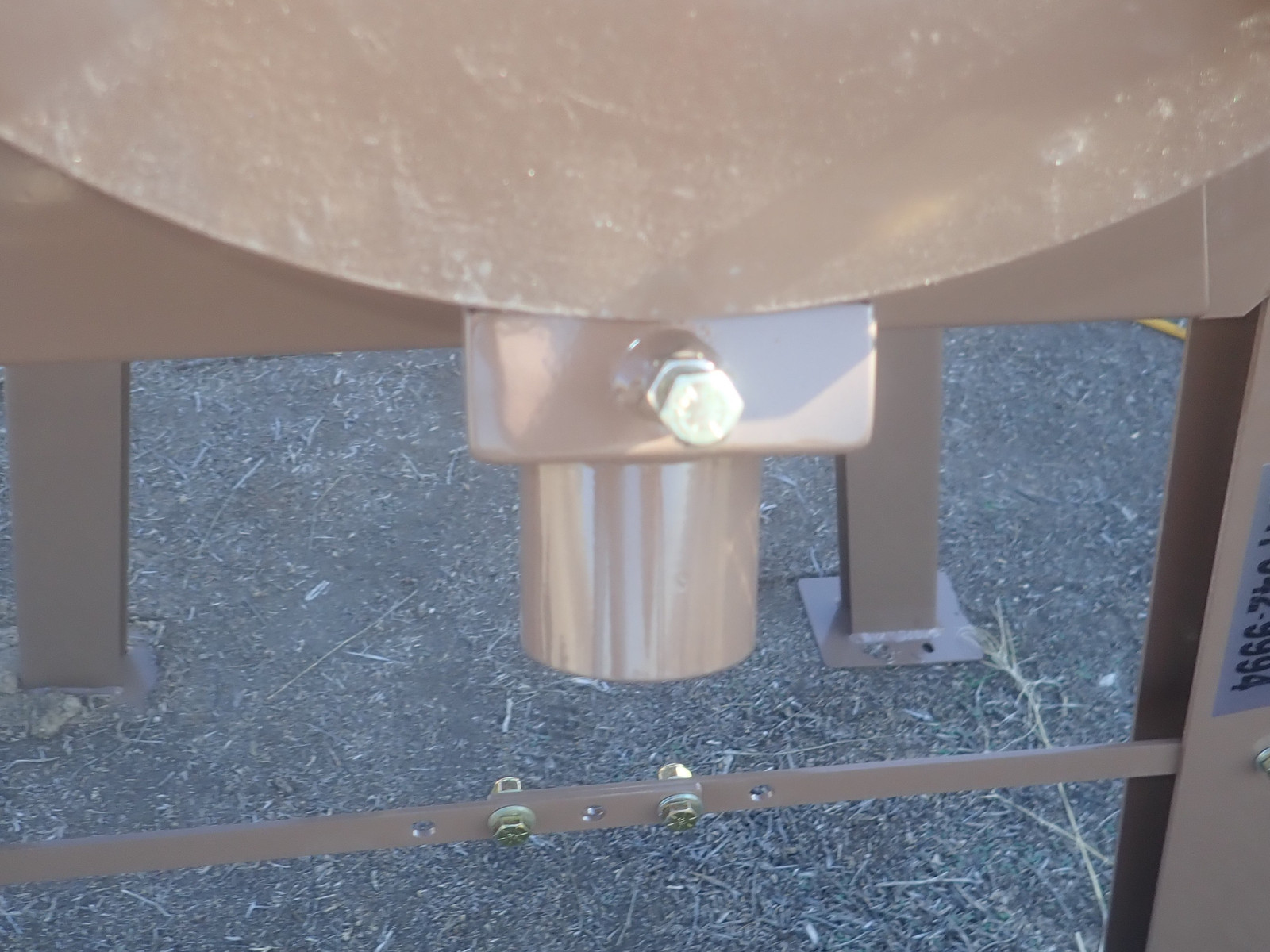
The rest of the Dust Deputy kit bolts together with a nice gasket, and you add some weatherstripping around the outside of the cover to help it seal to…

The bucket! The design here is that the cyclone separator sits on top of a bucket, and empties your material into the bucket, or whatever else happens to be down there to collect it.
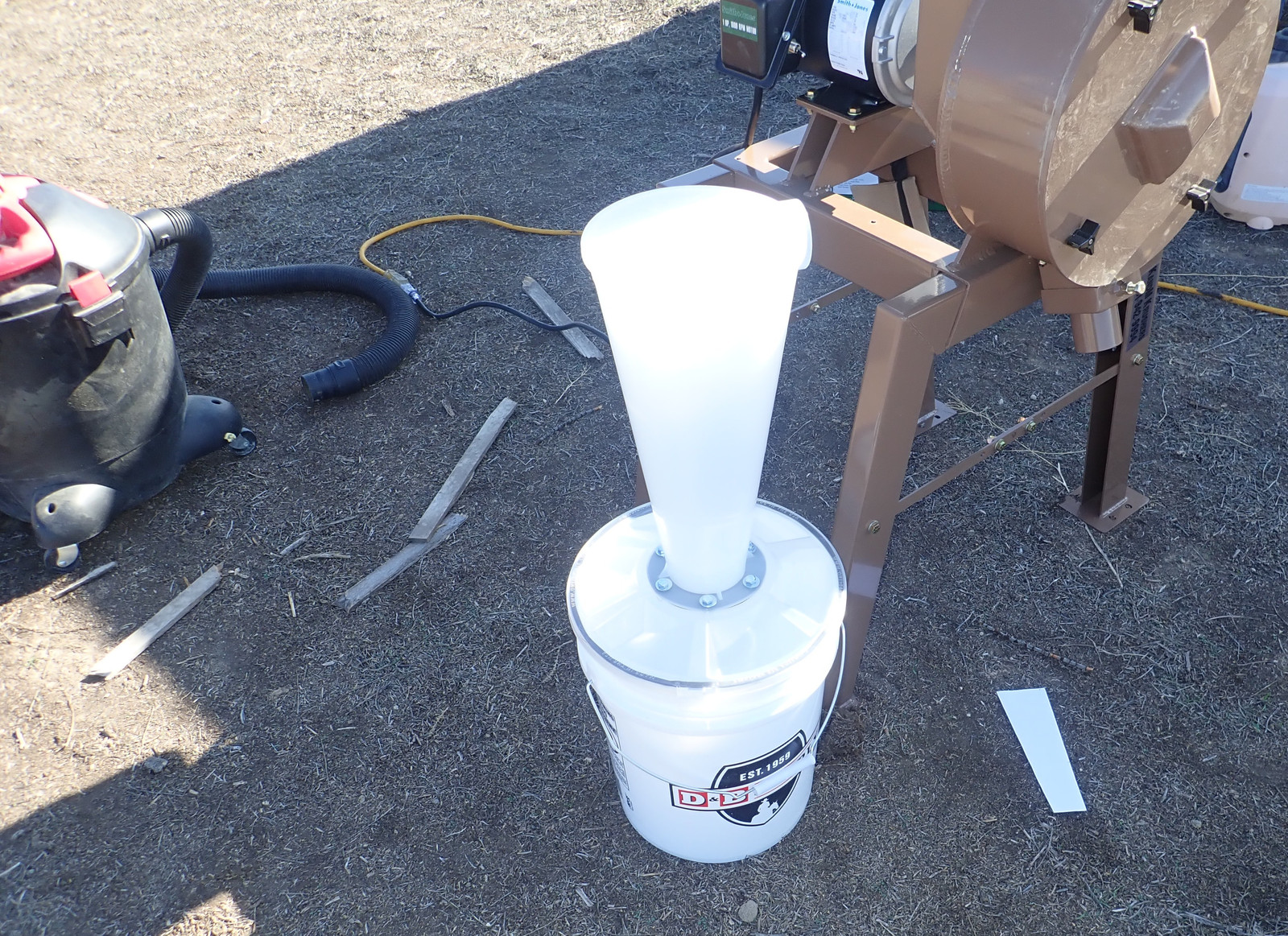
No, I’m not running this off my generator - even though it looks like it here. It’s just in the way. The stream of air and dust comes in the side of the cyclone separator, and centrifugal force keeps the heavy stuff (the rock dust, here - but it works similarly well on sawdust or a wide variety of other materials) stuck to the wall as it swirls down. A set of baffles ensures that most of the material exits the bottom into the bucket, while the now mostly clean air exits out the top into your suction source. Here, I’m using a standard shop vac with a 2.5” hose as the vacuum source. There’s still a bit of fine dust that goes into the vacuum cleaner, and I may consider chaining another Dust Deputy to try and filter out more of the superfines before they go into the shop vac. Rock dust, especially the very fine stuff, is somewhat annoying to deal with in a shop vac you use for other things too.
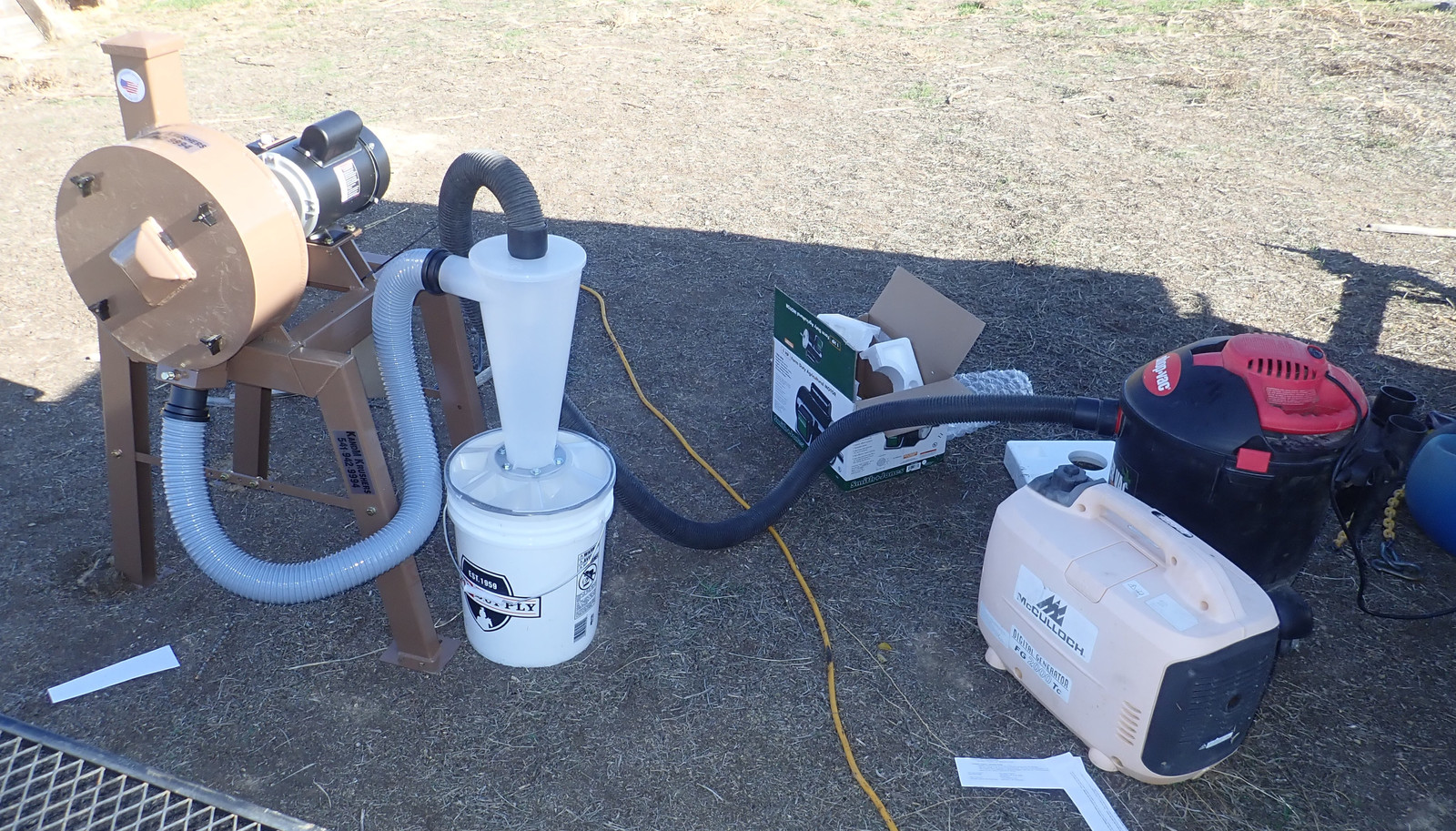
In operation, one advantage of the clear plastic sort of filter is that you can see the spirals of rock dust heading down. This serves as a useful check on production (that nothing is clogged), but also helps you see when things are actually done processing. A lot of “small rock debris” continues to be processed after you’ve stopped throwing things in.
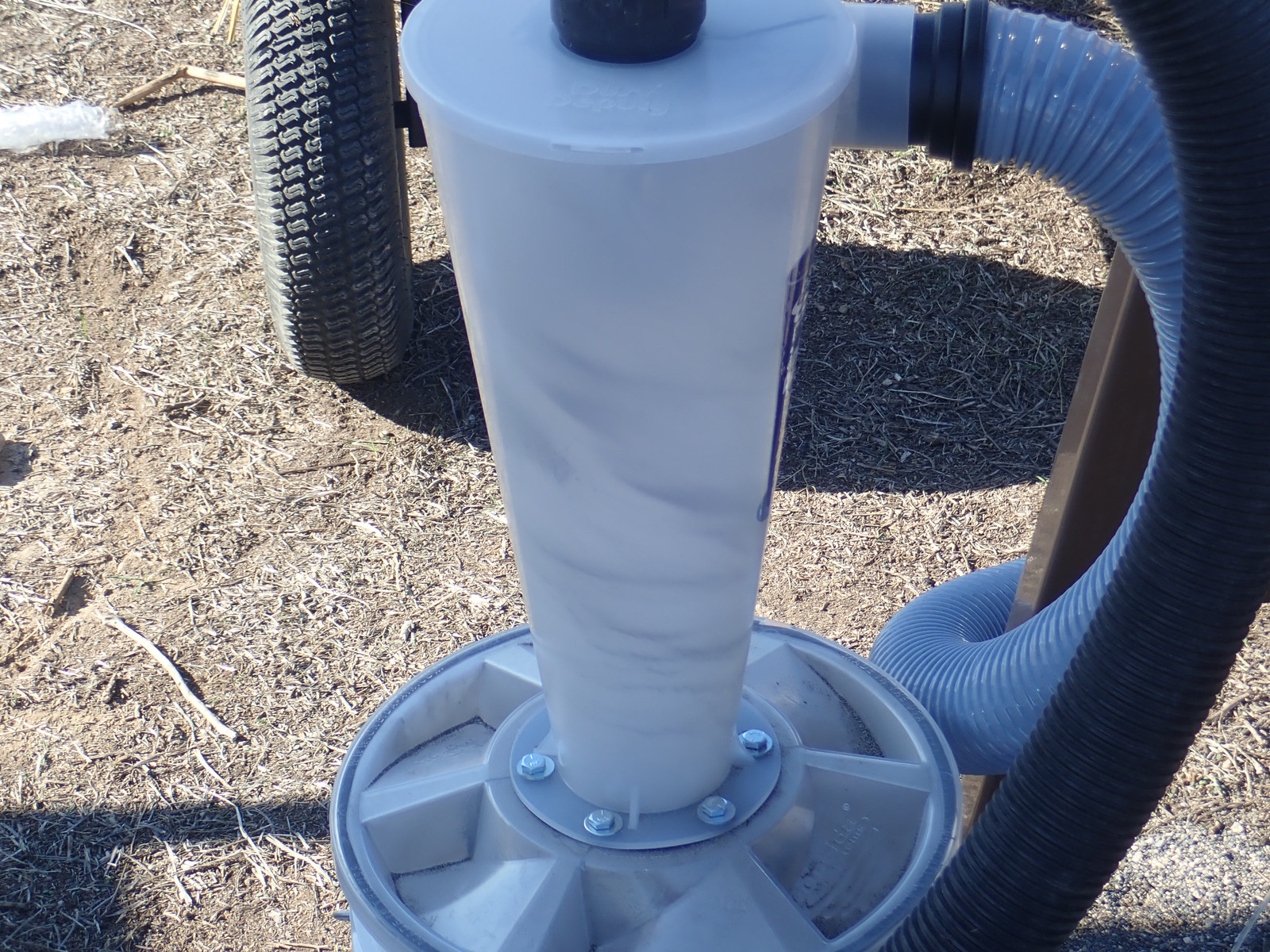
But how does the dust collection work, in practice? Very well - as long as it’s able to draw a vacuum on the grinding cylinder! What I’ve found is that if you have the opening to feed rocks in wide open, you’ll get dust around the edges of the cover - there’s not enough vacuum to keep that (not very well sealed) interface from leaking some fine dust. But if you restrict the feed opening a tiny bit, there’s literally no dust escaping from the process. it just has to be able to suck air through that cover plate gap, and all the dust is quite well contained into the piping, bucket, and shop vac. Every so often, I have to clean the shop vac filter, but I’m considering a few other options that will help keep the shop vac clean of any rock dust, and I’ll see how they work out!
Operating Notes
With 60 or 70 pounds of rock through the machine, how’s it run?
Very well - as long as you don’t jam the feed chute with larger material than it can swallow. Clearing that out takes a while, as you have to power the entire thing down, remove the cover, and free the debris (which will usually fit through - just not at the angle it tried). If you feed things that are roughly 50% larger than a golf ball and smaller, it just purrs away, grinding furiously, creating copious amounts of rock dust. The machine is rated at several hundred pounds an hour, and I don’t doubt one can do this, with experience and with a good sized feedstock!
It absolutely will swallow larger rocks (2” and larger, as long as they’ll get down the feed chute) and destroy them, but the motor quite visibly slows as it tries to process them, and you can sometimes hear the rock rattling around inside a number of times before it gives up and ends up as dust. So, you might intermix the larger material with some of your smaller material as you go to avoid stressing things too badly. I don’t get the impression that suddenly slowing the motor, over and over again, will be ideal for longevity.
When you open up the front (to clear out a jammed rock, to grease the bearings, or just to clean it out every so often), you’ll see a lot of assorted rock debris just past the filter screen. It will eventually be whipped up by the airflow and processed, if you’re patient - I let the machine run for a while after I’m done, and I still see a steady stream of material coming out into the cyclone filter. Opening up the top intake will add enough extra airflow to help free this stuff up - though you’ll eventually hit the limits of what will process. I suppose you could re-feed it if you wanted, but I’m not sure it really matters.
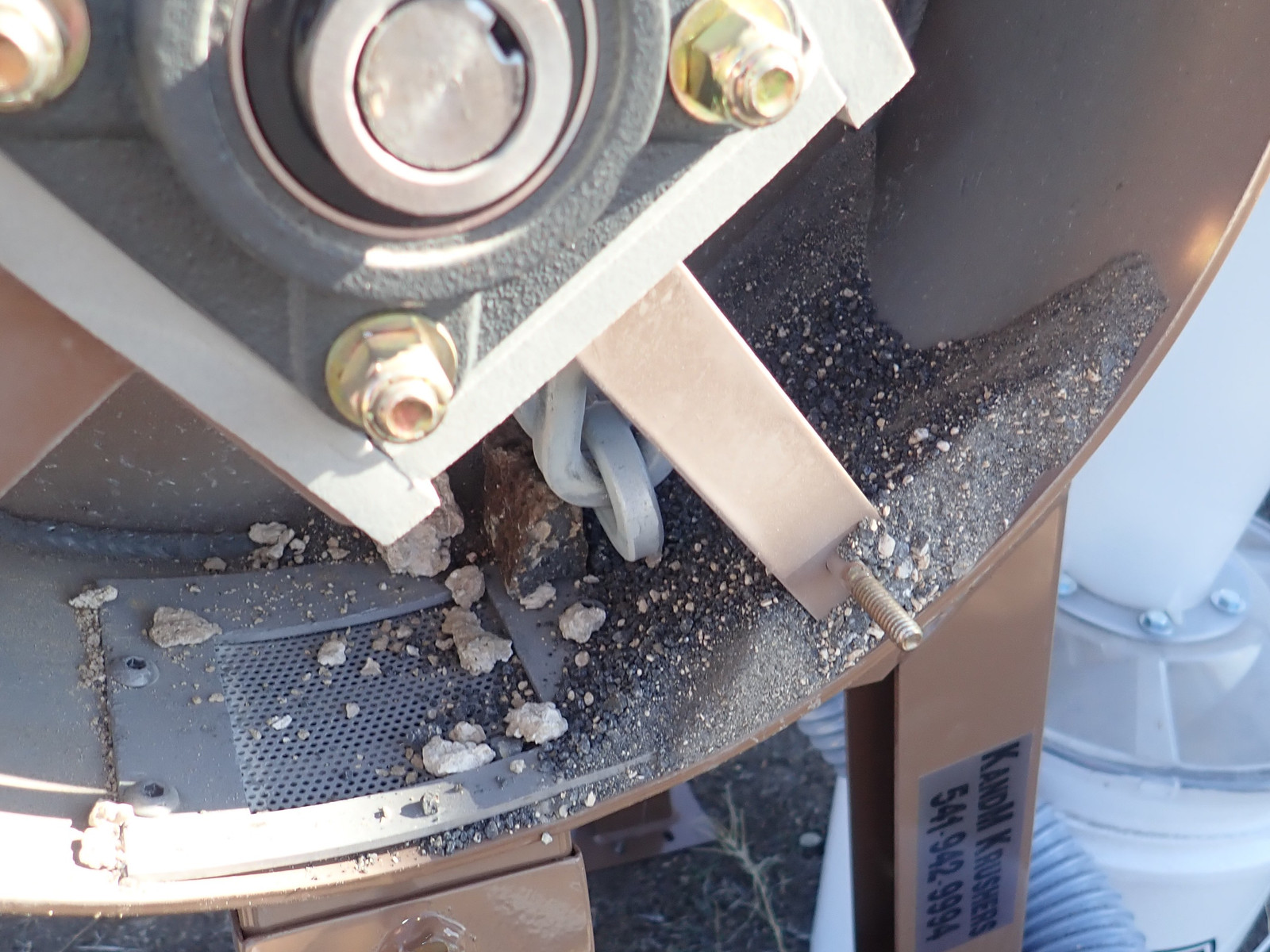
The end result should be an awful lot of rock dust! I’ve found that a 5 gallon bucket will hold 65-70 pounds of dust when full (you don’t want to let it fill all the way up, or it’ll back up into the cyclone and not filter properly). A gallon ziplock bag will hold about 10 pounds of the stuff, which is enough for quite a good area!
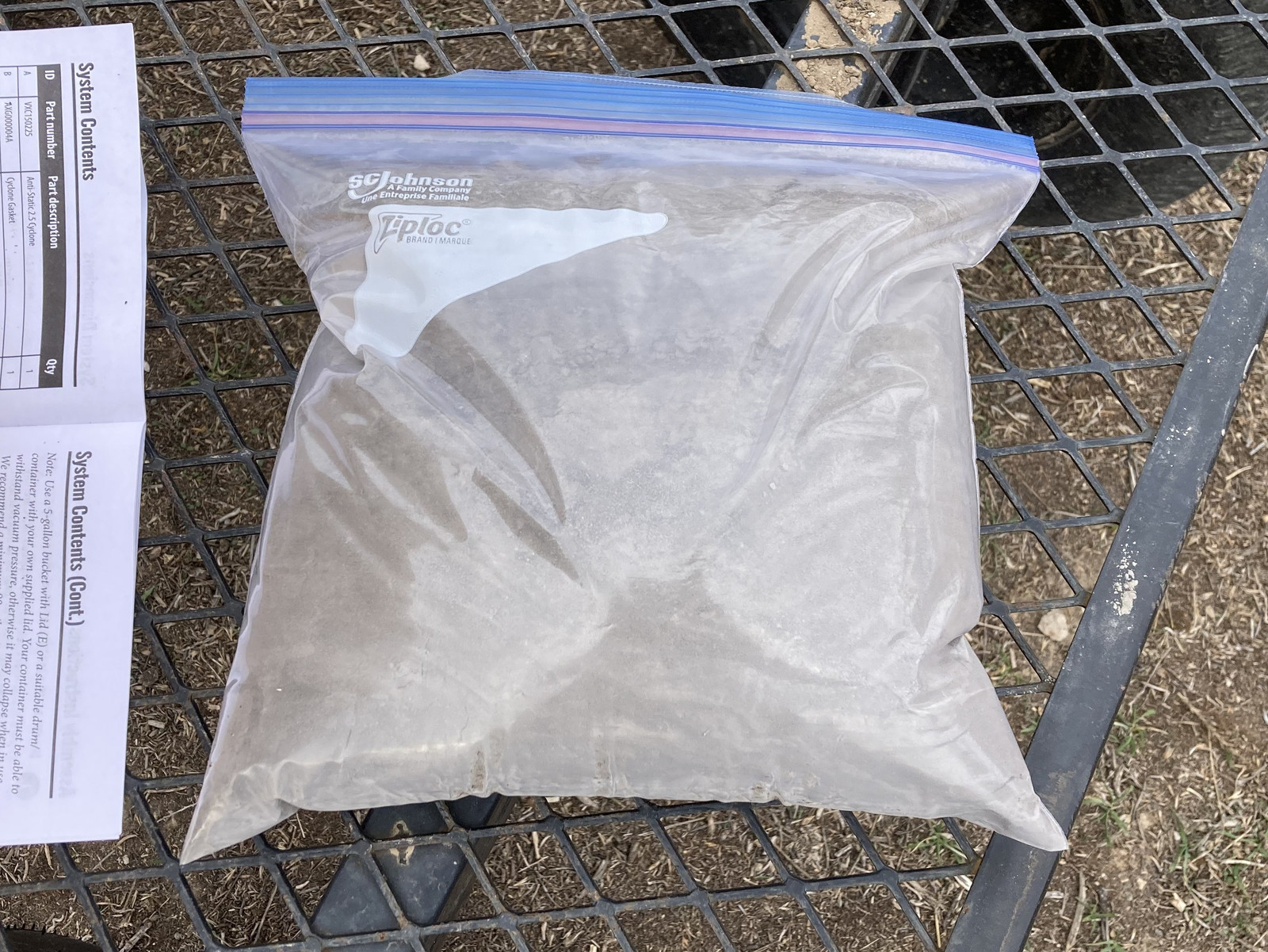
And that’s the basics of making rock dust! Want some?
Comments
Comments are handled on my Discourse forum - you'll need to create an account there to post comments.If you've found this post useful, insightful, or informative, why not support me on Ko-fi? And if you'd like to be notified of new posts (I post every two weeks), you can follow my blog via email! Of course, if you like RSS, I support that too.
